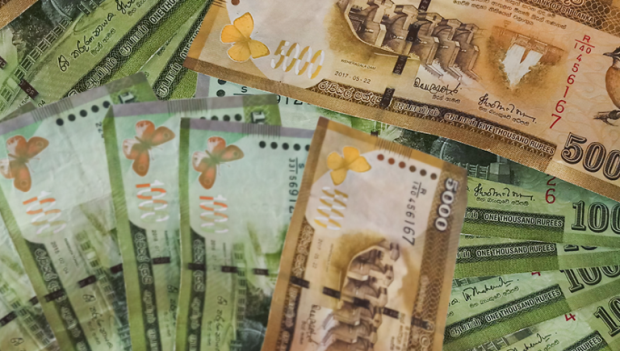COLOMBO – A Sri Lanka government overdraft mostly at State-run banks had topped half a trillion rupees by August 2020, spiking over 140%, official data showed as the budget deficit soared following a tax cut for ‘stimulus’, and import controls and a coronavirus crisis hit revenues.
The Treasury’s bank overdraft reached a historic high of Rs 541.5 billion by August 2020, rising 147% from a year earlier, a finance ministry report showed.
The overdraft in December 2019, just as the tax cuts were ordered was Rs 274.3 billion.
Sri Lanka’s tax revenues fell to Rs 801.4 billion down Rs 556 billion from an estimated Rs 1,358 billion as coronavirus lockdowns and import controls compressed revenues.
Customs import duty fell 66% from Rs 140 billion to Rs 73.2 billion, and a ports and airports levy fell 43% to Rs 71 billion from Rs 115 billion.
In Sri Lanka there is a strong mercantilist belief that currency falls and balance of payments troubles come from imports rather than credit and money printing.
When import revenues fall, money is printed, triggering outflows in non-controlled items, out of sync with inflows, putting further pressure on the currency and balance of payments.
Interest rates have also fallen amid money printing. However, foreign reserves are falling with financial account outflows, which analysts say points to below market rates to keep the external sector in balance already.
Unlike Western nations which have been handing out untargeted cash, Sri Lanka’s government has directed spending to the neediest, though State workers have been paid full salary. A salary hike initiated the by the last administration had been shelved.
However, unemployed graduates, who have a history of running a scheme to get hold of tax money through State jobs and pensions, after earning degree at the expense of society, are being hired to expand an already bloated sector.
Also another 100,000 least educated persons would also be hired.
Sri Lanka’s total expenditure was Rs 1,883 billion up to August, and revenues Rs 906 billion giving a budget deficit of Rs 977 billion.
By August Rs 171 billion rupees had been printed (central bank credit) for the budget, though a part had gone to repay foreign loans through the forex reserves.
-economynext.com


